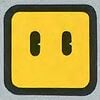Rotating Block: Difference between revisions
No edit summary |
No edit summary |
||
| Line 4: | Line 4: | ||
[[File:TurningBlocks.PNG|thumb|left|[[Mario]] using the [[Spin Jump]] to destroy some Rotating Blocks.]] | [[File:TurningBlocks.PNG|thumb|left|[[Mario]] using the [[Spin Jump]] to destroy some Rotating Blocks.]] | ||
Rotating Blocks | Rotating Blocks appear in the [[Super Smash Bros. (series)|''Super Smash Bros.'' series]] in [[Yoshi's Island (Super Smash Bros. Melee)|''Melee'''s Yoshi's Island stage]] (in ''[[Super Smash Bros. Melee]]'', ''[[Super Smash Bros. Brawl]], and [[Super Smash Bros. for Wii U]]''), and in the ''Super Mario World'' style of [[Super Mario Maker (stage)|the Super Mario Maker stage]] (in ''[[Super Smash Bros. for Nintendo 3DS / Wii U]]'' as DLC), working as they originally did, though they are 3D in Yoshi's Island (they turn 2D when rotating). They also show up in ''[[Super Princess Peach]]'', where they behaved like the Brick Blocks of the [[Super Mario Galaxy|''Super Mario'']] [[Super Mario Galaxy 2|''Galaxy'' games]]. Also, the [[Board]]s of ''[[Super Mario RPG: Legend of the Seven Stars]]'', [[Bike Pad]]s from ''[[Mario & Luigi: Superstar Saga]]'', and [[Yellow Block]]s from ''[[Paper Mario]]'' resemble Rotating Blocks. | ||
<br clear=all> | <br clear=all> | ||
==Names in other languages== | ==Names in other languages== | ||
| Line 23: | Line 23: | ||
[[Category:Super Mario World]] | [[Category:Super Mario World]] | ||
[[Category:Super Princess Peach]] | [[Category:Super Princess Peach]] | ||
Revision as of 16:37, April 26, 2016

Rotating Blocks[1], also known as Flip BlocksTemplate:Refneeded and Turning BlocksTemplate:Refneeded, are yellow, eyed blocks found in Super Mario World. When hit from below, they spin around, allowing Mario and Luigi to pass through them. Super Mario and Super Luigi can destroy them by using the Spin Jump from above. Chargin' Chuck can also destroy rotating blocks by charging into them. They seem to replace Brick Blocks from previous Super Mario games. Some blocks disguised as Rotating Blocks have items inside like ? Blocks. Also, enemies such as Koopa Troopas and Galoombas may hide in Rotating Blocks, and break out to attack Mario once he approaches him.
Rotating Blocks appear in the Super Smash Bros. series in Melee's Yoshi's Island stage (in Super Smash Bros. Melee, Super Smash Bros. Brawl, and Super Smash Bros. for Wii U), and in the Super Mario World style of the Super Mario Maker stage (in Super Smash Bros. for Nintendo 3DS / Wii U as DLC), working as they originally did, though they are 3D in Yoshi's Island (they turn 2D when rotating). They also show up in Super Princess Peach, where they behaved like the Brick Blocks of the Super Mario Galaxy games. Also, the Boards of Super Mario RPG: Legend of the Seven Stars, Bike Pads from Mario & Luigi: Superstar Saga, and Yellow Blocks from Paper Mario resemble Rotating Blocks.
Names in other languages
References
- ^ Super Mario World: Super Mario Advance 2 instruction booklet, page 19.